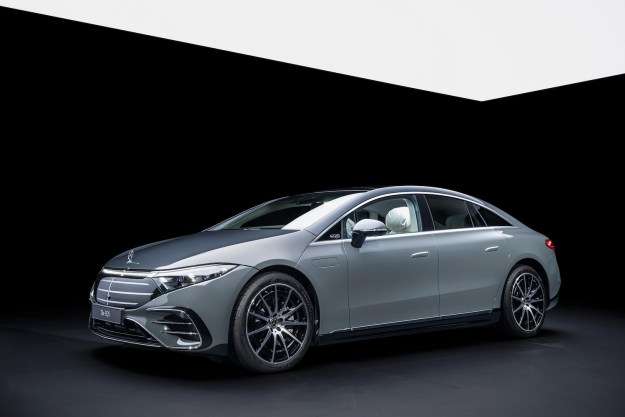At the 2017 Detroit Auto Show, Infiniti will unveil a concept car previewing both its next SUV and driver-assist technology that will find its way into future production models. But while the concept car is forward looking, it actually recycles a few things Infiniti has already shown to the public.
The Infiniti QX50 concept is based on the QX Sport Inspiration concept first seen at the 2016 Beijing Auto Show. It previews a replacement for the current Infiniti QX50, which is based on the now-discontinued G37 sedan. Where the current QX50 is really a G37 wagon on stilts, the new concept is styled more like a traditional SUV. The concept has short overhangs, a massive grille, and a tall hood and roof line, for a more macho SUV look.
The QX50 concept will feature driver-assist technology that may show up in future production models. Infiniti said these features will allow a car to drive itself through stop-and-go traffic, but that it doesn’t want to take full control away from the driver. The system is production ready according to Infiniti, though the automaker did not discuss a timeline for its launch.
Infiniti also noted that the QX50 concept “demonstrates a potential application” for its VC-Turbo variable compression ratio engine, which was unveiled at the 2016 Paris Motor Show in September. The engine can change its compression ratio on the fly, potentially allowing for a better balance between performance and fuel efficiency. It does this by adjusting how much the pistons move within their cylinders.
The VC-Tubo engine itself is a 2.0-liter four-cylinder unit that, as its name says, is turbocharged. It can alter its compression ratio from a performance-oriented 8:1, to an efficiency-focused 14:1. Infiniti is aiming for 268 horsepower and 287 pound-feet of torque. It expects a fuel-efficiency improvement of 27 percent over a V6 gasoline engine of comparable power output.
More details on the Infiniti QX50 concept will be revealed at Infiniti’s Detroit Auto Show press conference January 9, so stay tuned. Expect a production version of the QX50 concept to appear within the next year or so.


